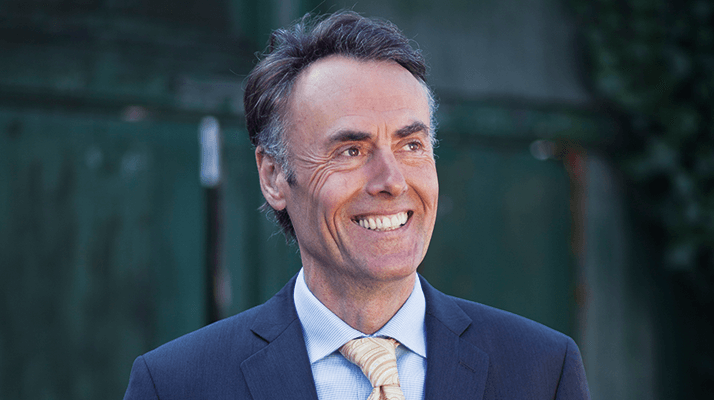
Where did the idea of the Access to Medicine Index come from? I had been working with clients in the pharmaceutical industry for over 15 years, leading a successful marketing business. I knew I wanted to do something different; I wanted to improve society. A report from Oxfam came into my hands – “Beyond Philanthropy” – challenging the pharmaceutical industry to do something about the fact that two billion people in the developing world have no access to medicine. Having worked with pharma, I knew the industry was willing to improve, but they didn’t know how. I also knew that, like most companies, pharma companies spend a lot of time looking at their competitors. Of course, they are interested in what governments say about them, they are interested in what NGOs say about them, but mostly they are interested in each other. This is the principle behind the Index. Before the Index, companies were not transparent – and they did not receive recognition for good practice. Perhaps more importantly, they didn’t know what their peers were doing to improve access.
So, you had a clear goal – how did you go about making it happen? Well, it wasn’t easy at first. If you ask Oxfam what they think Big Pharma should be doing, you get a different answer than if you ask WHO or an investor. I realized that unless we could find a common path, companies simply could not satisfy everyone. The first big task was to see if all the stakeholders could agree on what they wanted from pharma companies. The second task was to start measuring it; Access to Medicine Index is the result. It’s published every two years, and rates the 20 largest pharma companies on their efforts to improve access to medicine in developing countries. How did people react to the new Index at first? When I first started talking to pharma companies about the Index, they were not interested. For the first iteration, we compiled the data on each company from public records and sent it to them to check it was accurate. Only eight out of the 20 companies provided feedback. I think they were hoping that, if they didn’t react, nothing would happen! That all changed once the first Index appeared in the UK’s “Financial Times”. Companies saw that we were giving them truly valuable information. After all, we show what their peers are doing, define what society wants from them and measure how close they are to success. Now, all 20 companies work intensively to provide the requested data for the Index.
Any dark moments? At the start, there was at least one moment a week when I thought: “What am I doing?” The turning point for me was in 2007 at a conference in New York. The keynote was by Mary Robinson, former President of Ireland and United Nations High Commissioner for Human Rights. During her speech, she announced: “I have been impressed by the Access to Medicine Foundation’s efforts to get the stakeholder perspectives of the pharmaceutical companies. I think this is a very important development.” I had spoken to her briefly at a reception months before, but I had no idea that she planned to mention the Index! To be recognized by such a respected world leader – I will never forget that moment. I knew then that I would never give up. Or rather, I went from thinking I should give up once a week, to only once every two months!
How is industry progressing along the access to medicine journey? It takes time. These companies are like oil tankers; an oil tanker can change direction, but only a few degrees at a time. We must be patient. I am convinced that companies are making positive long-term decisions. I speak to CEOs and they know all about the Index and what the company is doing to improve their ranking. Companies have evolved, and so has the Index. As time goes on we have a more concrete, detailed picture of companies. With every Index we raise the bar. For example, for 2014 we are adding data from South America, so there is a whole new territory to consider. The nature of the Index is that if one company goes up, another must go down. But I am convinced that almost all companies have improved access since we started the Index.
What are your plans for the Index? Pharmaceutical companies are not solely responsible for access. By only measuring the Big Pharma companies, we are not getting a complete picture. So one of the next challenges is to look at the role of the other main players: generic medicine companies and governments. How do you feel about what you have accomplished so far? Starting the Foundation was the best decision of my life. Every day I do something that has never been done before. And it is something that develops our world. It is so rewarding to see practices changing; for example, the development of child dosage forms. I feel I now have the influence to change things for the better. But that doesn’t mean my work is finished. I’m on a path and I don’t know where it ends.
The 2014 Access to Medicine Index will be published in November.




